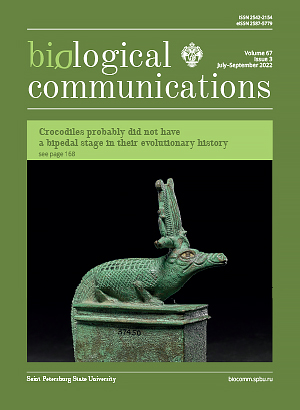Auxin sensitivity improves production of rosmarinic acid in transformed hairy roots of Lavandula angustifolia
DOI:
https://doi.org/10.21638/spbu03.2022.303Abstract
Hairy root culture is a promising approach to improve production of plant secondary metabolites. The genes, which are located in T-DNA of a root-inducing plasmid, regulate auxin sensitivity of hairy roots. Therefore, this study was aimed to improve the growth and rosmarinic acid production of Lavandula angustifolia hairy roots. Lateral branches of hairy roots were transferred to ½ MS and ½ B5 liquid media. To assess auxin sensitivity, indole-3-acetic acid (IAA) and indole-3-butyric acid (IBA) with four different concentrations (0, 0.1, 0.5 and 1 mg/l) were also applied. The growth of hairy roots in ½ MS medium was two-fold higher than in ½ B5 medium. In addition, both auxins were found to significantly improve the growth of hairy roots whereas non-transformed roots stopped growing in the presence of the auxins. The highest dry weight and rosmarinic acid production of hairy roots were obtained from ½ MS medium supplemented with IBA irrespective of its concentration. As a result, the hairy roots grown in ½ MS medium supplemented with IBA produced the maximum amount of rosmarinic acid (7.98 mg/g dry weight of hairy roots). This first report of rosmarinic acid production in L. angustifolia hairy roots provides new insights into the auxin sensitivity of L. angustifolia hairy roots.
Keywords:
auxin, basal media, hairy roots, rosmarinic acid, TL-DNA
Downloads
References
Downloads
Published
How to Cite
License
Articles of Biological Communications are open access distributed under the terms of the License Agreement with Saint Petersburg State University, which permits to the authors unrestricted distribution and self-archiving free of charge.





